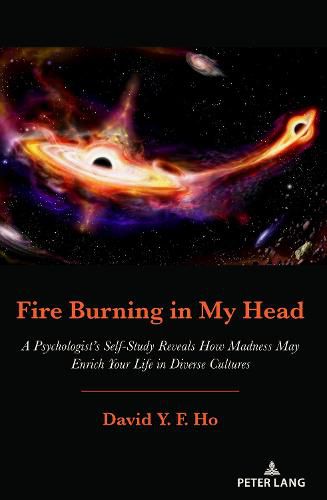Readings Newsletter
Become a Readings Member to make your shopping experience even easier.
Sign in or sign up for free!
You’re not far away from qualifying for FREE standard shipping within Australia
You’ve qualified for FREE standard shipping within Australia
The cart is loading…






This title is printed to order. This book may have been self-published. If so, we cannot guarantee the quality of the content. In the main most books will have gone through the editing process however some may not. We therefore suggest that you be aware of this before ordering this book. If in doubt check either the author or publisher’s details as we are unable to accept any returns unless they are faulty. Please contact us if you have any questions.
Written by a professor of clinical psychology, this book is accessible to thoughtful readers interested in the relation between spirituality and mental disorders. It comprises two main parts: The first part tells the story of how a psychologist-cum-patient performs a self-study of "madness" in great detail. It belongs to the long tradition of ideographic studies that attend to the uniqueness of each individual.
The author says: "During episodes, manic symptoms are manifest. Yet, I become more colorful, sensitive, generous, and loving. I see beauty everywhere and delight in the simple things of life. I glimpse into mystical magnanimity. All these inform me that my quest for spirituality is wedded to madness. Now, I can bear testimony that on balance the creative energy of madness may enrich rather than damage one's life. It is possible to retain a measure of madness in dignified living and of dignity even in a state of madness."
Adhering to the nomothetic tradition of knowledge generation, the second part gives extensive coverage to various aspects of mental disorders from a scientific perspective, including the ethical, political, and sociocultural contexts in which mental disorders occur. It resolves apparent contradictions between dualities, such as normality and abnormality, individualism and collectivism, and Eastern and Western values.
In the end, the reader may learn that it is possible to harness the creative energy of madness to enrich one's spiritual life-a topic that can hardly be found in psychiatric texts.
$9.00 standard shipping within Australia
FREE standard shipping within Australia for orders over $100.00
Express & International shipping calculated at checkout
This title is printed to order. This book may have been self-published. If so, we cannot guarantee the quality of the content. In the main most books will have gone through the editing process however some may not. We therefore suggest that you be aware of this before ordering this book. If in doubt check either the author or publisher’s details as we are unable to accept any returns unless they are faulty. Please contact us if you have any questions.
Written by a professor of clinical psychology, this book is accessible to thoughtful readers interested in the relation between spirituality and mental disorders. It comprises two main parts: The first part tells the story of how a psychologist-cum-patient performs a self-study of "madness" in great detail. It belongs to the long tradition of ideographic studies that attend to the uniqueness of each individual.
The author says: "During episodes, manic symptoms are manifest. Yet, I become more colorful, sensitive, generous, and loving. I see beauty everywhere and delight in the simple things of life. I glimpse into mystical magnanimity. All these inform me that my quest for spirituality is wedded to madness. Now, I can bear testimony that on balance the creative energy of madness may enrich rather than damage one's life. It is possible to retain a measure of madness in dignified living and of dignity even in a state of madness."
Adhering to the nomothetic tradition of knowledge generation, the second part gives extensive coverage to various aspects of mental disorders from a scientific perspective, including the ethical, political, and sociocultural contexts in which mental disorders occur. It resolves apparent contradictions between dualities, such as normality and abnormality, individualism and collectivism, and Eastern and Western values.
In the end, the reader may learn that it is possible to harness the creative energy of madness to enrich one's spiritual life-a topic that can hardly be found in psychiatric texts.